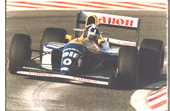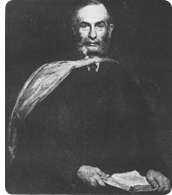
|
|
||||||||
The Development of Control Engineering in Britain
and the Cambridge Contribution continued...
|
From the mid 1980s the group was recognized for work in the major new approach of H-infinity control with the most recent professor of control, Keith Glover, now the Deputy Head of Engineering (Research) at Cambridge. These techniques were recently implemented successfully on a Harrier aircraft at Bedford with the control systems design work being carried out at Cambridge by R. Hyde and K. Glover. Another major research area for the group has been in automotive applications, e.g. engine management control and active suspension. The national and international prominence of the Cambridge research group is underlined by the fact that all three control professors have been made Fellows of the Royal Society. In the last decade the group received four IEEE transactions best paper awards. It was already noted above that Routh was Senior Wrangler in 1854. In fact Maxwell sat for the Mathematical Tripos in the same year and was placed second. Apparently Maxwell was so confident of achieving first place himself that he did not trouble to rise early to hear the list of successful candidates read out in the Senate House, but sent his servant instead. On his return, Maxwell is said to have enquired, "Well, tell me who's second!", and was somewhat taken aback to receive the reply, "You are, sir". (See Note 2). |
|
|
Edward John Routh (1831-1907) |
Note 1. The above text is in part extracted from the following article: Special issue on control education around the world - The United Kingdom by M.C. Smith, IEEE Control Systems Magazine, 51-56, April 1996.
Note 2. This anecdote is quoted from the book by R.H. Macmillan, Automation: friend or foe? Cambridge University Press, 1956 (p. 41). It seems that similar stories have been related for other examination rivals. See "James Clerk Maxwell's Cambridge manuscripts: extracts relating to control and stability - I" by A.T. Fuller, International Journal of Control, Vol 35, pp 785-805, 1982 (Appendix B).

